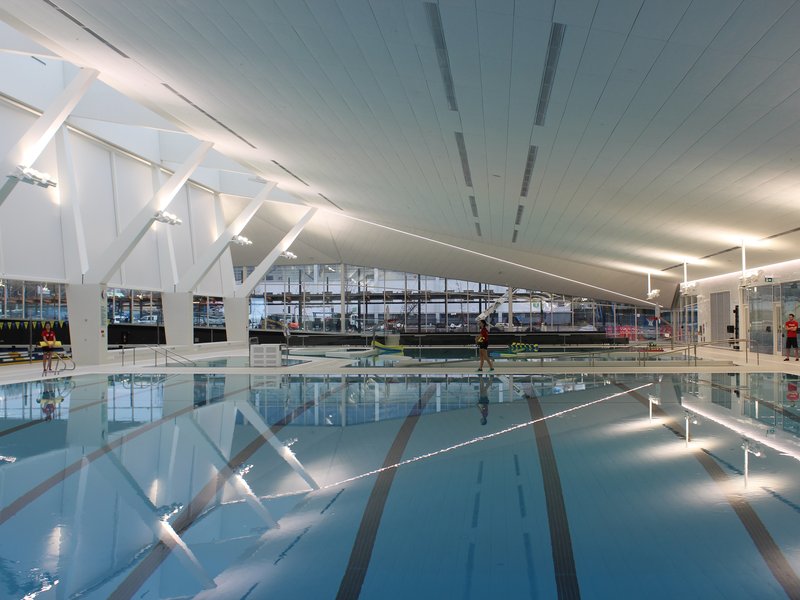UBC’s much-anticipated new Aquatic Centre opened on January 23, and with its innovative filtration system, it takes a big step in providing a sustainable design for future pool facilities. Designed by architects at MacLennan Jaunkalns Miller Architects (MJMA) and Acton Ostry Architects (AOA) and mechanical engineers from the AME Group, the filtration system and building design function together to effectively reduce the centre’s water consumption.
The new centre incorporated designs for sustainability in an innovative way, providing a template for future facilities being built.
“Every time there’s a facility like this that has these newest innovations and sustainability initiatives involved in it, I think that really inspires other municipalities or organizations that are building these kinds of facilities. It gives them something to build on and it gives them some ideas how it can be done more sustainably,” said Roberta Dyck, PhD candidate and sessional instructor of civil engineering at UBC Okanagan.
The centre was designed with UBC’s sustainability aims in mind. Pools consume large quantities of water through general use, as they will lose water through many different sources. One way water is lost is through evaporation from the pool surface. Each day, one to two inches of water is lost to evaporation, which means that it needs to be replaced on a regular basis.
“We want to ensure that the way it was designed was maximizing the water because pools use a lot of water and we want to be as sustainable as possible,” said Stéphane Delisle, UBC’s senior manager of operations and programs.
In order to replace the water lost, the Aquatic Centre was designed to collect wastewater more efficiently for re-use. Spill-over water from the pools and Vancouver’s rainwater are collected and held in surge-tanks and cisterns, respectively, to await filtration. Water that spills over the edge of the pool is treated for reuse in the pool, while rainwater is treated for use in toilet flushing and to replace water lost to evaporation from the pool.
“All of the wastewater normally from a pool is recaptured, and we are able to treat it and reuse it,” said Kavie Toor, UBC’s director of facilities and business development.
From collection, the water is sent through the filtration process. The process involves a pressurized diatomaceous earth tank (a type of water filter) as well as additional UV and chlorine filters. From there, the water is then pumped back into the pool facility for reuse. Both the pool spill-over water and rainwater are sent through the filtration process before use.
The Aquatic Centre is using regenerative media filters instead of the more traditionally used sand filters, as they provide many benefits for sustainability. Members of MJMA, AOA and the AME Group were able to provide further details on regenerative media filters.
Regenerative media filters, such as the ones used at the new Aquatic Centre, are able to filter out particles of a much smaller size than those filtered out by sand filters. A regenerative media filter is able to filter out particles that are one to five microns in diameter. A red blood cell is about five microns big. As a result, the water from the regenerative media filter requires less chemical treatment to achieve the required water quality for pool use.
Filters used in water treatment periodically require cleaning through the process of backwashing. Backwashing uses water to clean the surfaces of the filter from particles collected through filtration. The total amount of water used to effectively backwash a regenerative media filter is reduced by 92 per cent compared to sand filters, showing a significant reduction in water consumption.
“The big takeaway from the sustainability side of it is that through our building design, we’re saving 5.4 million litres of water per year,” said Toor.
Taken together, UBC’s Aquatic Centre is the first to incorporate all of these sustainability features available. Its innovative design works to meet a high level of sustainability while still maintaining a world-class facility. Through the centre’s collection methods and filtration system, it is able to reduce water consumption while providing a template for future pool facilities.
Share this article
First online






